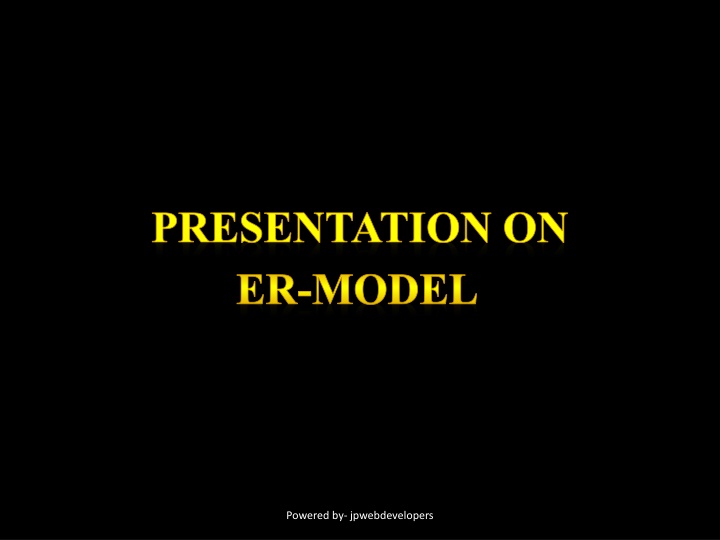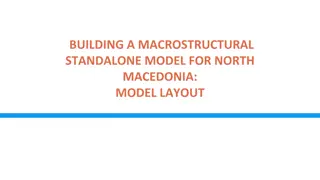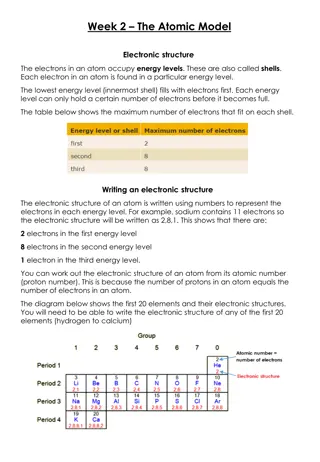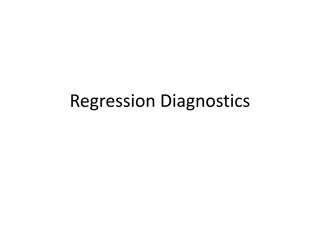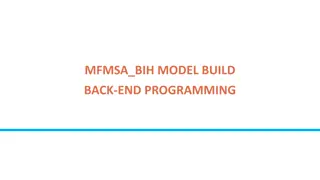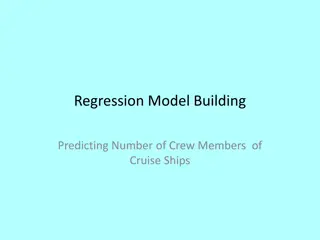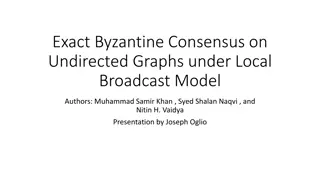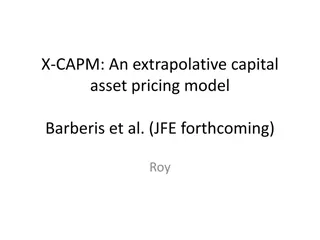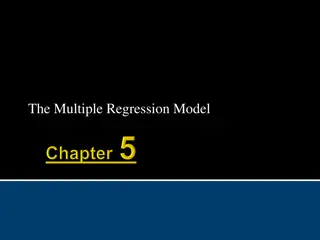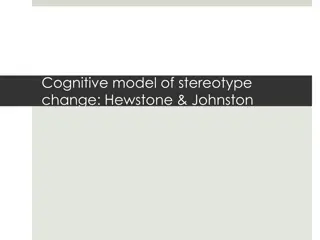PRESENTATION ON ER-MODEL
The Entity-Relationship (ER) model is a vital tool in database design, helping to visually represent the logical relationships between entities. This presentation covers the basic concepts like entities, entity types, and attributes in an ER model. Dive into different types of attributes such as simple, composite, derived, single-value, multi-value, and key attributes with clear diagrams and explanations. Discover how ER modelling technique is used in software engineering to create a conceptual data model for information systems.
Uploaded on Feb 20, 2025 | 1 Views
Download Presentation

Please find below an Image/Link to download the presentation.
The content on the website is provided AS IS for your information and personal use only. It may not be sold, licensed, or shared on other websites without obtaining consent from the author.If you encounter any issues during the download, it is possible that the publisher has removed the file from their server.
You are allowed to download the files provided on this website for personal or commercial use, subject to the condition that they are used lawfully. All files are the property of their respective owners.
The content on the website is provided AS IS for your information and personal use only. It may not be sold, licensed, or shared on other websites without obtaining consent from the author.
E N D
Presentation Transcript
PRESENTATION ON ER-MODEL Powered by- jpwebdevelopers
ER-model The entity-relationship model (or ER model) is a way of graphically representing the logical relationships of entities in order to create a database. ER-modelling is a data modelling technique used in software engineering to produce a conceptual data model of a information system. ER (Entity Relationship) Model are represented by ER diagram (Entity Relationship Diagram). Powered by- jpwebdevelopers
Basic Concept of ER-Model: Entity: An Entity may be an object with a physical existence a particular person, car, house, or employee. Entity Type: The basic concept of the ER model is the entity type that is used to represent a group of objects in the real world with common properties. Powered by- jpwebdevelopers
Types of Attributes: 1. Simple attribute Simple attributes are atomic values, which cannot be divided further. For example, a student's phone number is an atomic value of 10 digits. 2 Composite attribute Composite attributes are made of more than one simple attribute. For example an Address attribute of student Entity type consists of Street, City, State, and Country. Powered by- jpwebdevelopers
Types of Attributes: In ER diagram, composite attribute is represented by an oval comprising of ovals. 3. Derived attribute Derived attributes are those attributes whose values are derived from other attributes . For example, age can be derived from date_of_birth. Powered by- jpwebdevelopers
Types of Attributes: In ER diagram, derived attribute is represented by dashed oval. 4. Single-value attribute Single-value attributes contain single value. For example Roll no. of student. 5. Multi-value attribute Multi-value attributes may contain more than one values. For example, a person can have more than one phone number, email_address, etc. Powered by- jpwebdevelopers
Types of Attributes: In ER diagram, multi-valued attribute is represented by double oval. 6. Key Attribute:The attribute which uniquely identifies each entity in the entity set is called key attribute. For example, Roll_No will be unique for each student. In ER diagram, key attribute is represented by an oval with underlying lines Powered by- jpwebdevelopers
Relationship: The association among entities is called a relationship. For example, an employee works_at a department, a student enrolls in a course. Here, Works_at and Enrolls are called relationships. In ER diagram, relationship is represented by a diamond and connecting the entities with lines. Powered by- jpwebdevelopers
Mapping Cardinality: The number of times an entity of an entity set associates in a relationship set is known as cardinality. Cardinality can be of different types: one-to-one One entity from entity set A can be associated with at most one entity of entity set B and vice versa. Example: Student allotted a project 11 Student allot Project Powered by- jpwebdevelopers
Mapping Cardinality: One-to-many One entity from entity set A can be associated with more than one entities of entity set B however an entity from entity set B, can be associated with at most one entity. A department recruits faculty is a one-to-many relationship because a department can recruit more than one faculty, but a faculty member is related to only one department. 1 N Faculty Department recruits Powered by- jpwebdevelopers
Mapping Cardinality: Many-to-one More than one entities from entity set A can be associated with at most one entity of entity set B, however an entity from entity set B can be associated with more than one entity from entity set A. Example:Student enrolls one Course but a Course can have many Students. N 1 Student enroll Course Powered by- jpwebdevelopers
Mapping Cardinality: Many-to-many More than One entity from A can be associated with more than one entity from B and vice versa. Example: Author writes books is a many-to- many relationship because an author can write many books and a book can be written by many authors. Student Student enroll MN Powered by- jpwebdevelopers
Symbols and Notations: Powered by- jpwebdevelopers
Er Er- -diagram: diagram: 1 1 N 1 M N Powered by- jpwebdevelopers
Data dictionary Data dictionary is the centralized collection of information about data. It contains descriptions and definitions concerning the data elements, data structure,their interrelationships and other characteristics of a system. Data dictionary is reference work of data about data (meta data). Powered by- jpwebdevelopers
Data dictionary contents Data dictionary contains 1. Data Elements 2. Data structure 3. Data flow 4. Data store Powered by- jpwebdevelopers
Data elements Data elements are smallest unit of data that has some meaning. It consist of name and descriptions of data and Internal or external data stores etc. It is the smallest unit of data has some meaning. Powered by- jpwebdevelopers
Data structure Data structure are a group of data elements that describe a unit in the system. An algebraic notation is used to represent the data structure. Structural record and general structural record used. Powered by- jpwebdevelopers
Data flow Each data flow should be defined with descriptive information and it s composite structure or elements. It includes the following information: ID:- identification number label :- the text that should appear on the diagram A general description of the data flow. The source of data flow this could be an external entity, a process, or a data flow coming from data store. The destination of the data flow. Powered by- jpwebdevelopers
Data store It stores the information from where the data enters into the system and exit out of the system. The data store may include -> Files -> Tables Powered by- jpwebdevelopers
jpwebdevelopers.inDownload Ppts jpwebdevelopers.in Thank You Follow us @jpwebdevelopers Email jpdevelopers2020@gma il.com Powered by- jpwebdevelopers
